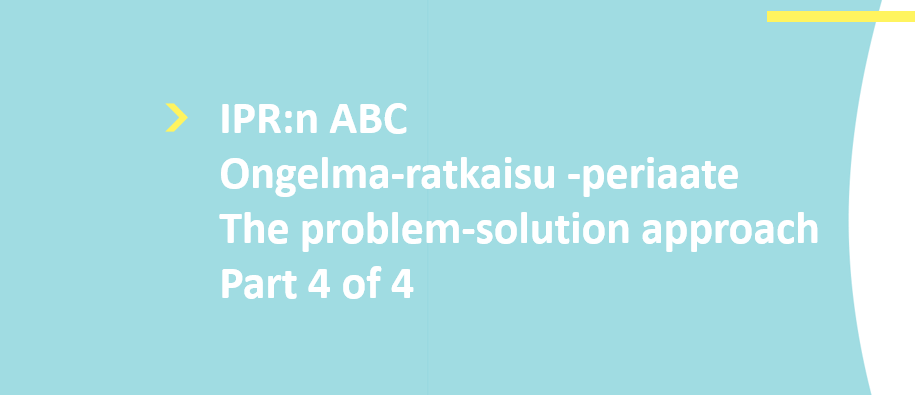The could-would method as part of the problem-solution approach

- Kathy Wasström
- –
- News
- –
- 14.12.2020

When discussing the could-would method, what is meant is usually an alternative method for determining whether a new solution is inventive, to be used instead of the European problem-solution approach.
This could-would determination is, however, possible to utilize also as part of the problem-solution approach.
The could-would method is based on determining whether a person skilled in the art would have made a specific improvement to prior solutions, based on the available prior art. In other words, it is not sufficient that he/she could have made said improvement.
In the problem-solution approach, this could-would approach can be utilized when discussing the publication selected to represent the closest prior art. In said context, it is not sufficient to indicate that the person skilled in the art could have carried out the required changes to the closest prior art, to modify its teachings to provide the invention being evaluated. Instead, the prior art should guide the skilled person in the required direction, so that he/she would have made the required modifications.
Therefore, it is often determined, in this context, whether any of the known publications, i.e. the prior art, includes an incentive, based on which the person skilled in the art could have decided that the required direction of modifications would have been worth testing.
An example would be a case where a certain feature, missing from the publication representing the closest prior art, would make it possible to achieve a certain improvement for a certain product. If it is mentioned in the same publication that it would be of benefit to achieve said improvement, the publication could be considered to include said incentive, which would guide the person skilled in the art towards finding said improvement from another publication.
Similarly, the prior art can be examined to determine whether it includes a teaching that guides the person skilled in the art in the wrong direction (i.e. a “teaching against” the required modification).
For example, if a certain feature is included only in a comparative example, and is interpreted to have a negative effect on the invention described in this document, it can be considered unlikely that the person skilled in the art would still use that feature from another document and combine it with the disclosure from the closest prior art.
As in other methods related to the evaluation of inventive step, only the factors that were commonly known already before the filing date of the patent or patent application to be evaluated can be taken into account in the could-would determination.
See also:
The problem-solution approach in determining inventive step
Difficulties in the determination of the objective technical problem

